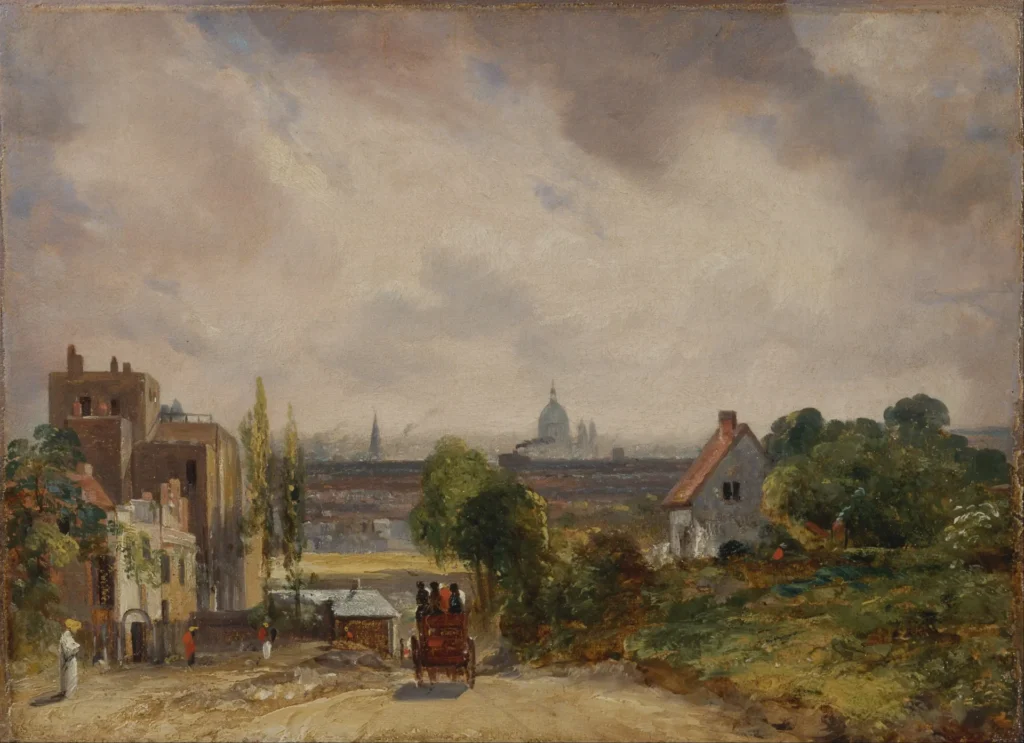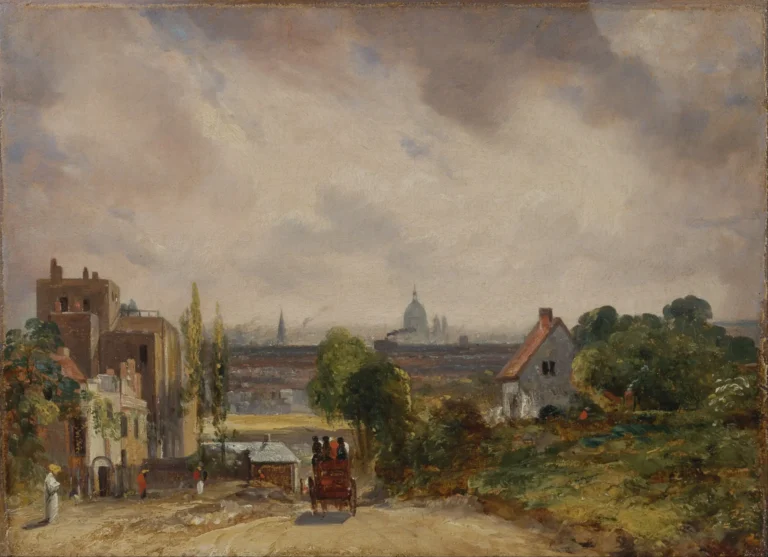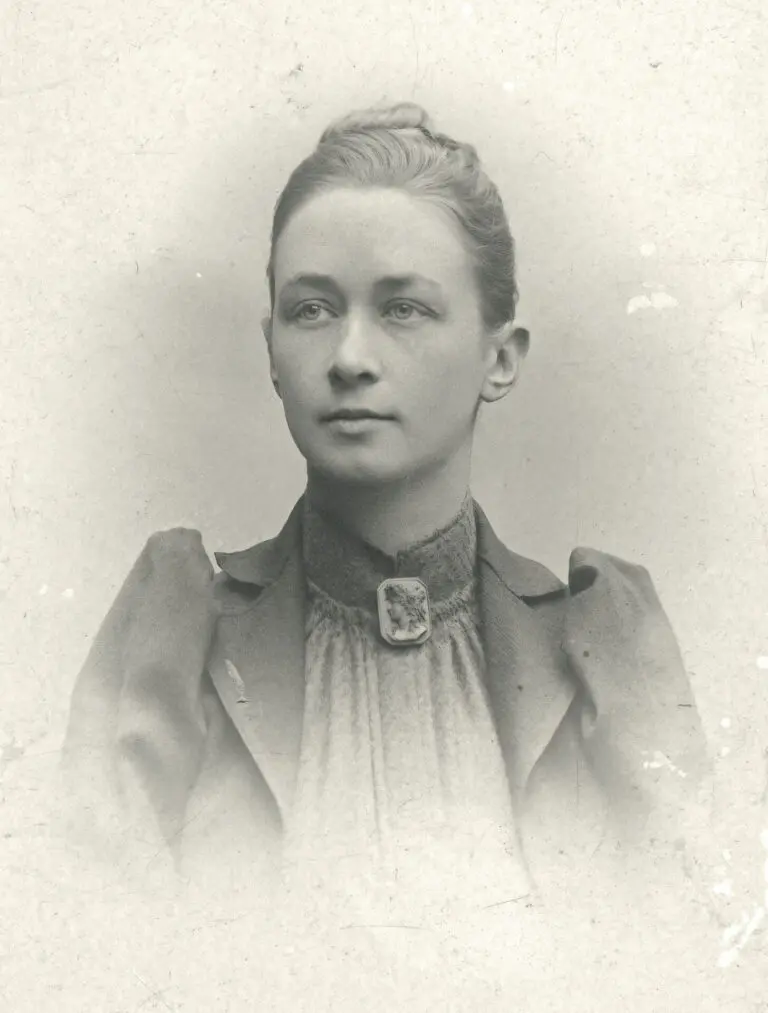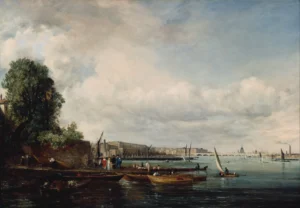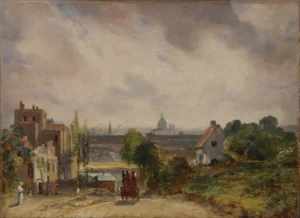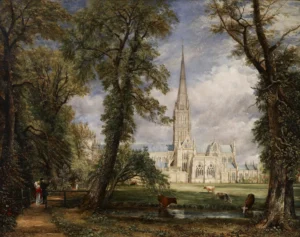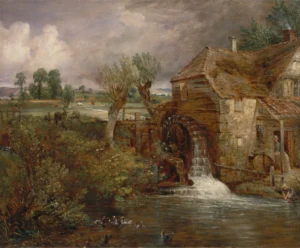Sir Richard Steele's Cottage, Hampstead
Created between 1831 and 1832 by the celebrated British painter John Constable, Sir Richard Steele's Cottage, Hampstead is a stunning oil on canvas that highlights the serene landscape from Haverstock Hill, overlooking rural Hampstead towards a growing London skyline. The painting focuses on the cottage once inhabited by the notable writer Richard Steele, alongside a local public house, depicting daily life in a rapidly changing England. Today, the artwork resides in the Yale Center for British Art, symbolizing Constable's deep connection to Hampstead's beauty and history.
1831 - 1832
About the Artwork
The story behind Sir Richard Steele's Cottage, Hampstead is rooted in both artistic dedication and historical narrative. John Constable, known for his love of nature and the English countryside, began work on this piece in 1831 during a time when Hampstead was still largely rural. The cottage depicted belonged to Richard Steele, a prominent Irish writer and member of the Kit Cat Club, with the public house 'Load of Hay' serving as a testament to the area's social fabric. This representation is particularly poignant as the cottage was demolished in 1867, yet Constable's painting immortalizes its charm. The artist's choice to exhibit this work in the Royal Academy Summer Exhibition of 1832 speaks to its significance, as it encapsulates a moment in time when the countryside was undergoing transformation into urban landscapes, a theme deeply explored in Constable's body of work. The painting’s legacy persists, further exemplified by a mezzotint by David Lucas, ensuring that Steele's home remains a cherished part of Hampstead's history.
Did You Know
Richard Steele (1672-1729) was a pioneer in English literature, known for co-founding the ‘Tatler’ and ‘Spectator’ magazines. His influence extended beyond the realm of writing, contributing to the cultural landscape of 18th-century Britain.
‘Sir Richard Steele’s Cottage’ was demolished in 1867 as part of urban development for Belsize Park. Nonetheless, the area remembers its literary history through the continuation of the name Steele Road, commemorating the cottage and its notable inhabitant.
John Constable is celebrated for his profound understanding and representation of the English landscape. His innovative brushwork and dedication to capturing light and atmosphere secured his place as a pivotal figure in Romantic landscape painting, influencing many artists who followed.




